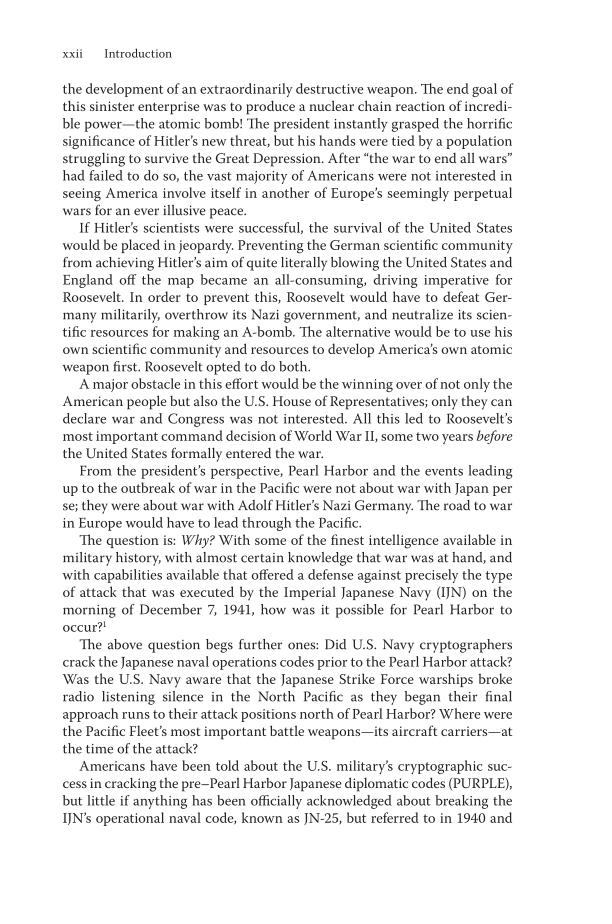xxii Introduction the development of an extraordinarily destructive weapon. The end goal of this sinister enterprise was to produce a nuclear chain reaction of incredi- ble power—the atomic bomb! The president instantly grasped the horrific significance of Hitler’s new threat, but his hands were tied by a population struggling to survive the Great Depression. After “the war to end all wars” had failed to do so, the vast majority of Americans were not interested in seeing America involve itself in another of Europe’s seemingly perpetual wars for an ever illusive peace. If Hitler’s scientists were successful, the survival of the United States would be placed in jeopardy. Preventing the German scientific community from achieving Hitler’s aim of quite literally blowing the United States and England off the map became an all-consuming, driving imperative for Roosevelt. In order to prevent this, Roosevelt would have to defeat Ger- many militarily, overthrow its Nazi government, and neutralize its scien- tific resources for making an A-bomb. The alternative would be to use his own scientific community and resources to develop America’s own atomic weapon first. Roosevelt opted to do both. A major obstacle in this effort would be the winning over of not only the American people but also the U.S. House of Representatives only they can declare war and Congress was not interested. All this led to Roosevelt’s most important command decision of World War II, some two years before the United States formally entered the war. From the president’s perspective, Pearl Harbor and the events leading up to the outbreak of war in the Pacific were not about war with Japan per se they were about war with Adolf Hitler’s Nazi Germany. The road to war in Europe would have to lead through the Pacific. The question is: Why? With some of the finest intelligence available in military history, with almost certain knowledge that war was at hand, and with capabilities available that offered a defense against precisely the type of attack that was executed by the Imperial Japanese Navy (IJN) on the morning of December 7, 1941, how was it possible for Pearl Harbor to occur?1 The above question begs further ones: Did U.S. Navy cryptographers crack the Japanese naval operations codes prior to the Pearl Harbor attack? Was the U.S. Navy aware that the Japanese Strike Force warships broke radio listening silence in the North Pacific as they began their final approach runs to their attack positions north of Pearl Harbor? Where were the Pacific Fleet’s most important battle weapons—its aircraft carriers—at the time of the attack? Americans have been told about the U.S. military’s cryptographic suc- cess in cracking the pre–Pearl Harbor Japanese diplomatic codes (PURPLE), but little if anything has been officially acknowledged about breaking the IJN’s operational naval code, known as JN-25, but referred to in 1940 and
Document Details My Account Print multiple pages
Print
You have printed 0 times in the last 24 hours.
Your print count will reset on at .
You may print 0 more time(s) before then.
You may print a maximum of 0 pages at a time.














































































































































































































































































































































































































































